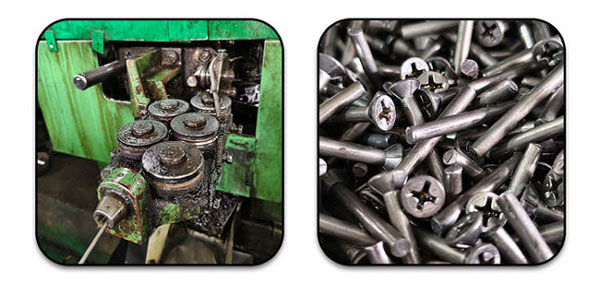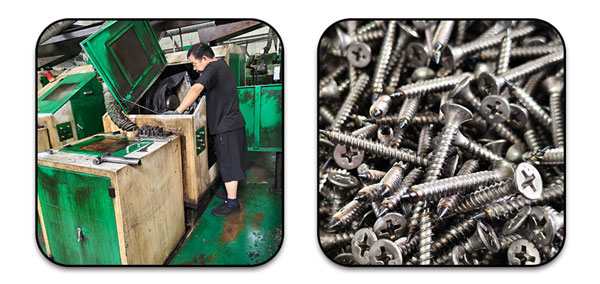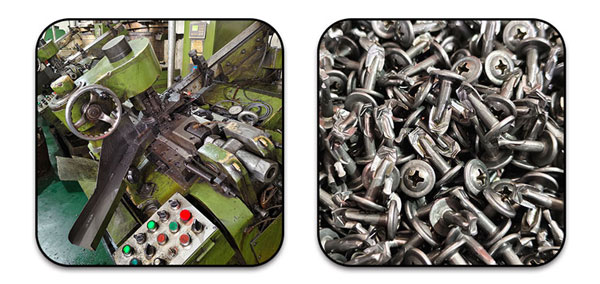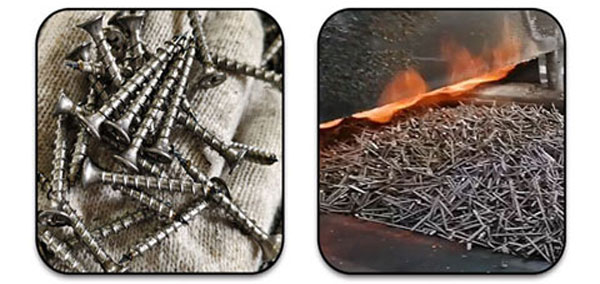LITUO screw factories has 25 years of experience in screw production and export. We have established long-term cooperative relationships with clients from all over the world, including Canada, the United States, Mexico, Chile, Peru, Brazil, Colombia, Ecuador, Bolivia, Argentina, Cambodia, Russia, Kazakhstan, Uzbekistan, Spain, France, Libya, Iraq, and various African countries.
Our screw factory covers an area of 10,000 square meters and employs 30 skilled operators. We have our own complete production lines, including:
50 head punching machines
39 thread rolling machines
10 end-forming machines
6 EPDM washer assembly machines
1 packing machine
Some of the equipment is imported from Taiwan to ensure high production efficiency and quality.
Our monthly production capacity reaches up to 500 tons, equivalent to about 20 x 20GP containers. Annual sales have reached 100 million RMB.

The 3.5x25 drywall screw is formed using a two-die two-blow or three-die three-blow cold heading machine. A 25mm wire is cut and shaped into a pan, countersunk, or commonly a bugle head, followed by slotting for the Phillips recess. At this point, the screw has a formed head and smooth shank. Burrs are removed via vibration deburring. Typical output is 150–220 pcs/min.
Key points:
Mold precision ensures proper head shape.
Feed length controls total screw length.
Sufficient pressure is needed for full head formation, especially for bugle heads.

Blank screws with formed heads and slots are cold-formed at room temperature to produce fine, sharp, single-start threads. A vibratory feeder aligns the screws for entry into a two-plate flat die thread rolling machine, where the moving die rolls the shank to form threads. Finished screws are collected for heat or surface treatment. Output: 250–350 pcs/min (for 3.5x25 fine-thread sharp-tip drywall screws).
Key points:
Replace worn dies to maintain thread quality.
Ensure stable feeding to avoid cross or double threads.
Control feed length for proper thread start and driving performance.

Special chamfering molds shape the screw tail into an inverted triangular cone, forming the basic drill point profile. Then, a grinding wheel or cutting tool-type drill point forming machine mills two cutting edges, creating the drill blade that enables the tail to cut metal. The working efficiency is 150–250 pieces per minute.

Screws are heated in a continuous mesh belt or rotary furnace to 850–880°C for 15–25 minutes. Quenching quickly increases hardness; cooling must be fast but controlled to avoid sticking. Tempering at 180–220°C for 20–30 minutes reduces hardness, improves toughness, and relieves stress to prevent breakage. Final cooling is done naturally or with air.
Raw Material:
The raw materials of we use are low carbon steel C1022A. all are new raw materials, do not accept recycled materials. to make sure the quality of screw are good.

Semi-finished products:

Screw Warehouse:
